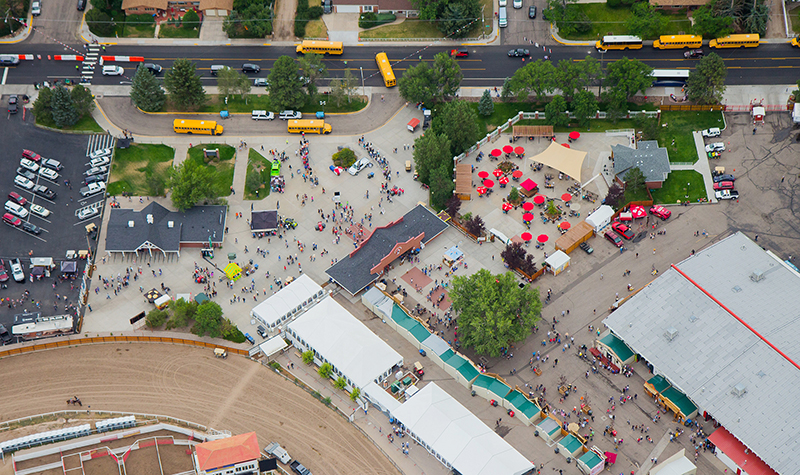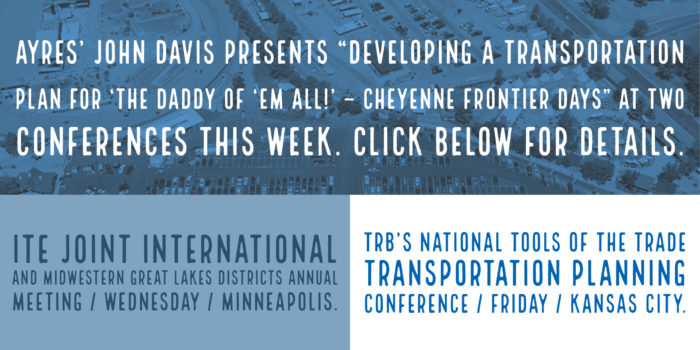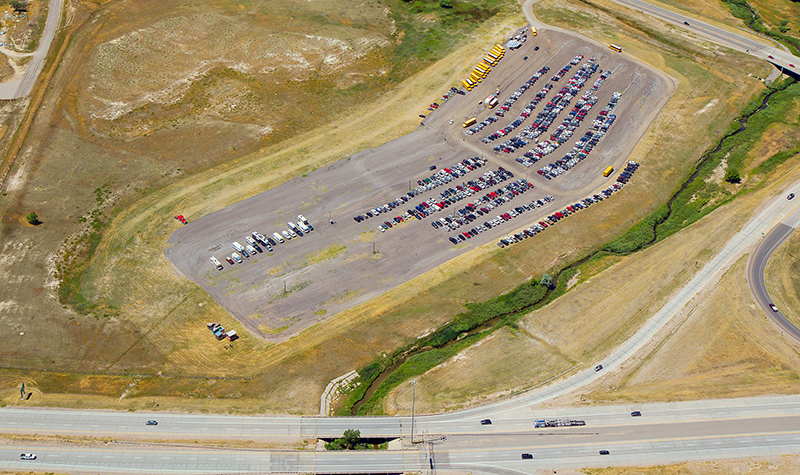Traffic Engineers Steer Traffic, Corral Cars for Cheyenne Frontier Days
 While most drivers likely don’t stop and ponder the science behind a traffic signal when they’re late for work and stuck at a red light, quality traffic engineering is critical to providing safe, efficient roadway travel. Whether it’s studying the relationship between traffic signals on a busy roadway corridor, forecasting future traffic volumes due to new development, or a multitude of other traffic-related concerns and issues, traffic engineering helps communities meet traffic challenges and plan for future traffic flow.
While most drivers likely don’t stop and ponder the science behind a traffic signal when they’re late for work and stuck at a red light, quality traffic engineering is critical to providing safe, efficient roadway travel. Whether it’s studying the relationship between traffic signals on a busy roadway corridor, forecasting future traffic volumes due to new development, or a multitude of other traffic-related concerns and issues, traffic engineering helps communities meet traffic challenges and plan for future traffic flow.
However, the need for traffic engineering extends beyond the roadway; it also can play an important role in improving traffic flow at special events. Ayres Associates recently completed a traffic study to address traffic congestion and parking concerns during the annual Cheyenne Frontier Days in Cheyenne, Wyoming. The event is called the World’s Largest Outdoor Rodeo and Western Celebration; every year more than 200,000 people come to Cheyenne, population 64,000, for this event. This study addressed short-term improvements to congestion issues as well as future traffic and parking planning.

What is Traffic Engineering?
Whether they are studying a major transportation corridor or an event like Cheyenne Frontier Days, traffic engineers provide a range of service for their clients:
- Intersection and corridor capacity analysis
- Traffic signal design, operations, and timings
- Work zone user delay analysis
- Corridor planning
- Warrant analysis (stop, signal, and roundabout)
- Origin-destination studies
- Pedestrian, school, and bicycle studies
- Traffic impact analysis (TIA) and peer review
- Traffic modeling and microsimulation
- Traffic counting
- Crash and safety analysis
- Roundabout design and analysis
- Signing and pavement marking design and evaluation
Traffic engineers use cutting-edge technology and design practices to develop creative solutions that meet the needs of a specific location, whether it be safety crosswalks for pedestrian traffic near a school or a roundabout for an accident-prone intersection. Meeting the traffic challenges that come with growth may require new streets, turn lanes, traffic signal improvements, or roundabouts. The road to those solutions may begin with some sort of a study – community traffic impact study guidelines, roadway improvement assessment studies, and traffic impact studies.

Why are Traffic Studies Important?
Traffic impact studies define how much traffic a development will add to your street system and what improvements will be required to provide safety and reduce traffic disruptions. Traffic studies can identify:
- How much traffic is generated
- How it will affect your street system
- What improvements are required
- The best site parking and circulation design
- How to manage access on your street
Traffic studies identify the issues that exist with a roadway corridor or intersection. Traffic studies can assess the impact a new development will have on adjacent roadways or parking lots. Traffic engineers also can study what will happen to traffic flows when traffic patterns are changed. A traffic study also can determine the impact a road closure will have on traffic congestion during road construction.
Overall, traffic engineering provides solutions to a multitude of traffic and parking-related problems that people encounter every day.
 In the case of the Cheyenne Frontier Days traffic study, some changes were made for this year’s event, which was in July. Traffic circulation was modified in the park-and-ride lot to ease congestion at peak times, and green-light time was increased at a traffic signal. Some lane configurations were modified, and coordination was improved among all the event stakeholders.
In the case of the Cheyenne Frontier Days traffic study, some changes were made for this year’s event, which was in July. Traffic circulation was modified in the park-and-ride lot to ease congestion at peak times, and green-light time was increased at a traffic signal. Some lane configurations were modified, and coordination was improved among all the event stakeholders.

Post a comment: